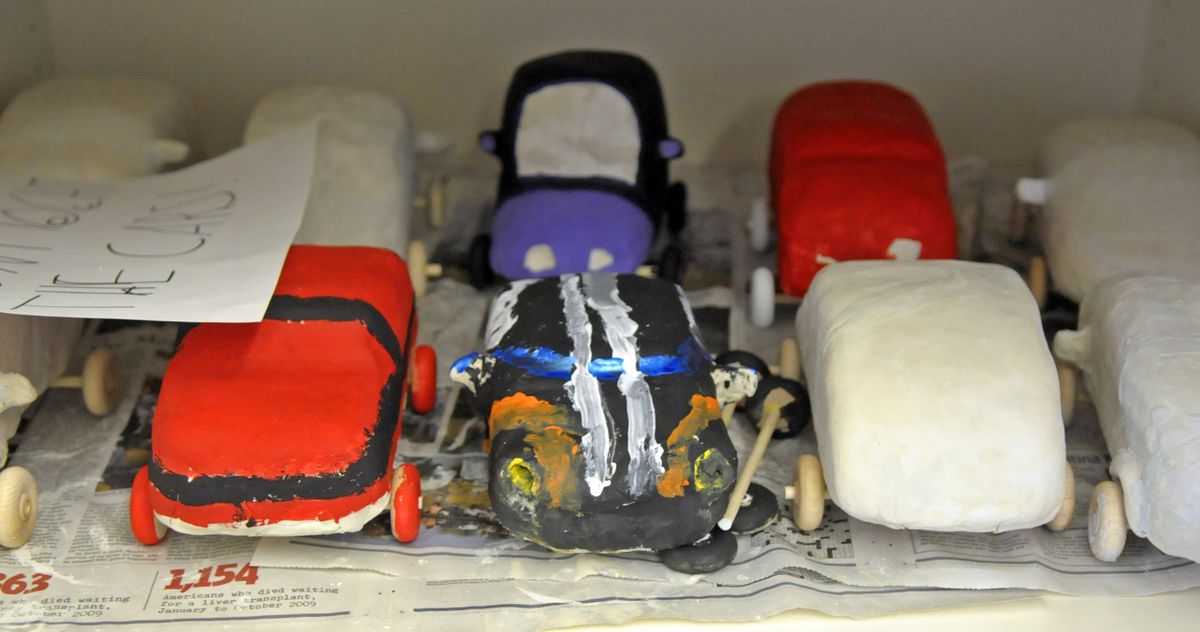Experimenting with interactive science
Retired NASA engineer and his wife help out at elementary school

School volunteers come in all shapes and sizes: parents, grandparents, college students. But the kids in Heidi Vanderzee’s sixth-grade class at Prairie View Elementary have a volunteer with additional credentials. He’s a retired NASA engineer.
When Tom Crocker retired two years ago, a golf buddy suggested he put his scientific expertise to good use by volunteering at the North Side school. Crocker agreed and brought his wife, Debbie, along. “It’s a joint effort,” he said with a smile.
Vanderzee has been delighted with their help. “He decided he liked us,” she said. “And he decided our science program looked pretty weak.” Indeed, Crocker felt they could do a lot better.
At the invitation of the school staff, Crocker revamped the science curriculum by adding more hands-on experiments. His stellar qualifications made him the perfect person for the job.
“When I graduated from Gonzaga University, I went to work for NASA in 1963,” Crocker recalled. “I had an opportunity to work as a research engineer on the Saturn missile – the missile that went to the moon.”
From NASA he went on to Pacific Northwest National Laboratory where he worked on nuclear reactors. While serving on the engineering advisory board at Washington State University, Crocker grew concerned about the quality of engineering students. He found their science background lacking. Volunteering at Prairie View gives him an opportunity to reach budding scientists at a critical time.
“I truly believe if we don’t get kids interested in science in grades K-6, we won’t have them in college engineering (programs),” he said. “We live in a highly technological world. Kids have to become knowledgeable.”
Part of getting kids enthusiastic about science involves transferring textbook knowledge to real life application. For example, this fall students learned about mixtures and solutions in their chemistry unit. “We decided to make lip balm,” said Crocker. Students researched, produced, packaged and sold 1,300 tubes of lip balm. “They raised over $2,000 for the school trip,” he added.
This winter, the sixth-graders studied friction and electricity. Using the principles they’d learned, the students designed distinctive cars. They were required to draw their design to scale and write a persuasive essay explaining why a buyer would choose to purchase their car.
Under the Crockers’ guidance and with the help of other volunteers, the students transferred their designs to foam blocks and then cut the cars from the blocks. After applying a layer of air-drying clay, the cars were ready to be painted.
On a recent afternoon, the students applied the finishing touches to their creations. Jake Holden carefully lavished blue metallic paint on his car, a nine-passenger limousine with massaging seats. He proudly pointed out the details. “The solar panels are to make it environmentally friendly,” he explained.
Connor McIntosh, 11, said, “The best part was carving out the Styrofoam blocks!” He described the mess they made as bits of foam floated through the air and clung to the students’ hair and clothing.
Other classmates weren’t so enthusiastic about the mess. “My least favorite thing was the Styrofoam,” said Ruby Camp, as she applied silver trim to her dark blue car. Her vehicle includes a popcorn machine and built-in refrigerator.
Olivia Delger expanded on the food theme when she created her car. “It has an automatic jelly bean maker,” she said. Other designs include a bright orange carrot car and a hamster car, complete with whiskers.
Vanderzee said Crocker “has brought science to our school in a big way. He’s now our school science coach. It’s been a really interesting partnership and good for everyone involved.”
However, Crocker is quick to redirect any praise. “I enjoy my volunteer work,” he said. “But the real story is what the teachers have done in taking the initiative to improve their science knowledge.”